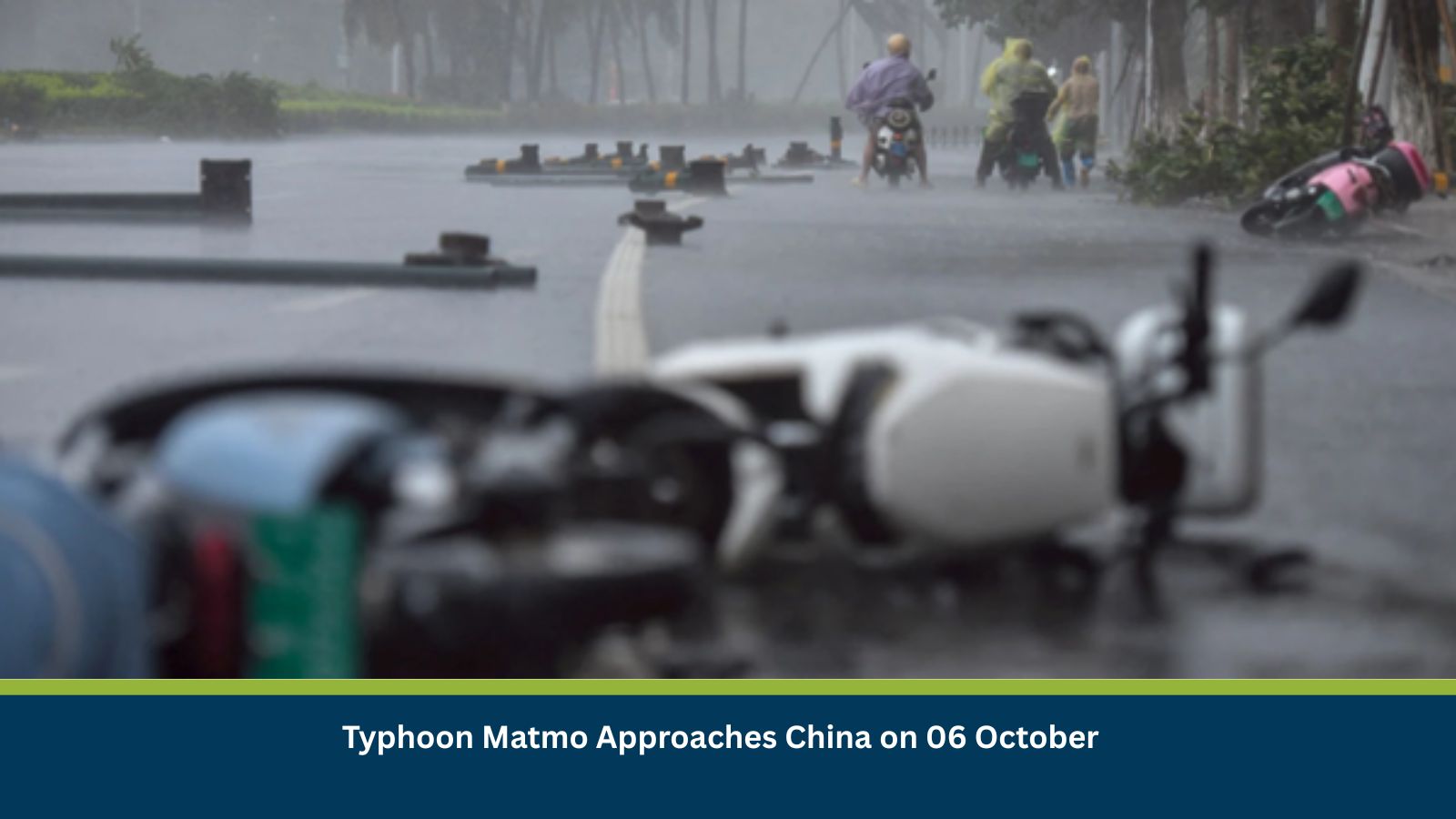What is Risk Analysis in the Context of Natural Disaster Events
Risk analysis in the context of natural disasters involves evaluating the potential physical, economic, and social impacts arising from extreme weather events such as typhoons, floods, or earthquakes. It helps governments, businesses, and citizens anticipate disruptions, prepare mitigation measures, and ensure rapid recovery. In East Asia, typhoons are recurring high-impact events examples include Typhoon Lekima (2019), Fitow (2013), and Matmo (2014) which caused extensive infrastructural damage, power outages, and severe supply chain breakdowns. Assessing Typhoon Matmo’s trajectory and likely impact is therefore critical to minimize human and economic losses.
Executive Summary
- Date of Incident: 06 October 2025
- Location: Tibet, Shanxi, Shaanxi, Inner Mongolia, Guizhou, Yunnan, Hainan, Guangxi, Beijing, Hebei, Guangdong, China
- Risk Category: Natural Disasters
- Severity Score: 4/5
- Confidence Level: 88%
Typhoon Matmo is projected to cause widespread disruption across China’s southeastern and coastal regions. With the potential for strong winds, heavy rainfall, and storm surges, it poses severe risks to public safety, transport networks, and industrial operations. Historical parallels with Lekima (2019) and Fitow (2013) suggest possible large-scale flooding, infrastructure damage, and prolonged power outages. The immediate impact period is expected to last 4–6 days, with extended recovery over subsequent weeks.
Current Updates & Known Hotspots
As of 06 October, the China Meteorological Administration (CMA) has issued high-level warnings for coastal provinces including Zhejiang, Fujian, and Guangdong. Emergency response units are mobilized, and evacuation orders may follow depending on the storm’s landfall.
High-impact zones include Fuzhou, Ningbo, Wenzhou, and the Yangtze River Delta industrial corridor. Medium-impact areas include Jiangsu and Hainan provinces, while low-impact zones are expected inland across Guangxi and Guizhou. Coastal infrastructure, port operations, and industrial parks remain particularly vulnerable. Past typhoons have shown recurrence patterns along the East China Sea corridor, making preparedness essential.
Impact on Transportation and Services
Severe disruptions are expected across air, sea, and land networks. Major airports such as Shanghai Pudong, Ningbo Lishe, and Fuzhou Changle may experience mass flight cancellations. Maritime activity in the East China Sea and at ports like Ningbo-Zhoushan and Shanghai is likely to halt temporarily. High-speed rail services, particularly between Wenzhou, Hangzhou, and Fuzhou, face high suspension risk. Power and water utilities could experience widespread outages – similar to the three million households affected during Typhoon Lekima (2019). Businesses in coastal cities should anticipate operational slowdowns due to employee displacement and logistical challenges.
Recommended Actions
- Immediate: Activate emergency communication systems (SMS, app alerts), suspend travel to coastal regions, and enforce work-from-home protocols.
- Operational: Secure critical assets, back up essential data offsite, and reinforce vulnerable structures.
- Supply Chain: Establish alternate logistics routes and emergency storage for critical materials.
- Strategic: Maintain continuous coordination with the CMA, local disaster agencies, and suppliers to track real-time alerts.
- Business Continuity: Form a cross-functional Incident Management Team (HR, IT, Operations, Legal) to oversee response and recovery phases.
Multidimensional Impact
The typhoon’s collateral effects extend beyond direct damage. Prolonged power cuts could disrupt financial systems and digital infrastructure, while port shutdowns may ripple across international supply chains, affecting global manufacturing cycles. Agricultural regions may face crop losses and soil degradation, straining food prices regionally. Urban flooding could trigger temporary displacements, heightening public health risks and sanitation challenges. Economically, repair and recovery costs could strain regional budgets, while industrial productivity and export throughput could take weeks to normalize.
Emergency Contacts
- Police: 110
- Fire Department: 119
- Ambulance: 120
- National Emergency: N/A
- Official Channels:
Final Thoughts
Typhoon Matmo presents a high-severity, multi-sectoral threat, combining meteorological intensity with economic exposure. The risk trajectory points to short-term, high-impact disruption between 06–10 October, followed by phased restoration over the next few weeks. Businesses should prioritize personnel safety, continuity planning, and post-impact assessment. Strategic takeaway: proactive risk intelligence and cross-sector coordination remain vital to safeguard lives, assets, and operations. Strengthening early warning systems and investing in resilient infrastructure will be key to mitigating similar events in China’s future typhoon seasons. Stay ahead of operational risks with real-time alerts, scenario modeling, and expert advisories with datasurfr’s Predict. Start your 14-day free trial of Datasurfr’s Risk Intelligence Platform today.






